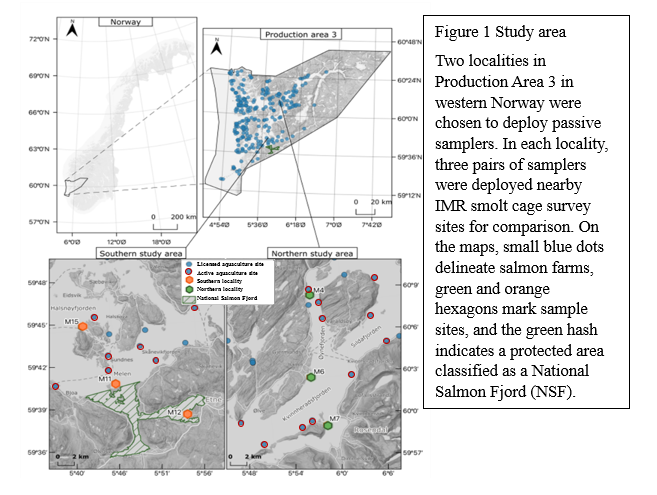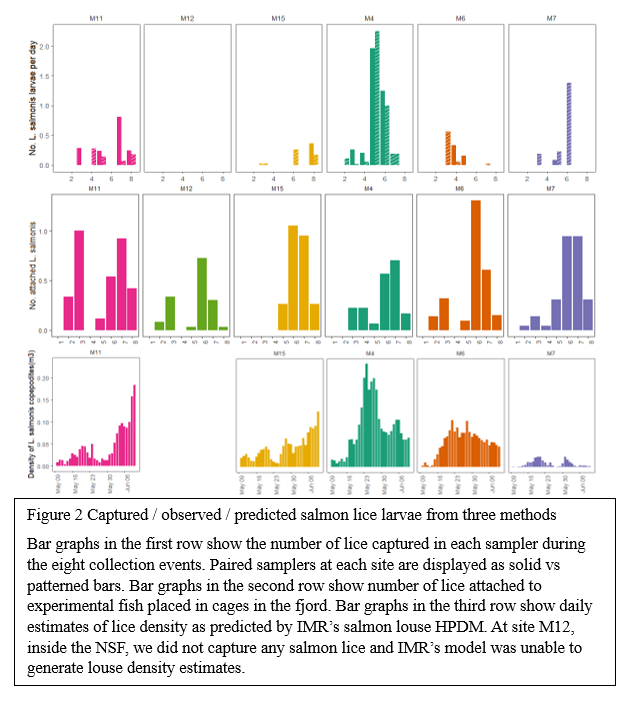HARNESSING CURRENTS TO QUANTIFY PARASITES: ddPCR ANALYSIS OF PASSIVELY COLLECTED PLANKTON PROVIDES NEW EMPIRICAL DATA FOR SALMON LICE RISK ASSESSMENTS
Abstract
Modeling the dispersion of marine species and debris is a critical technological development that has aided fisheries management, aquaculture development, and marine conservation. In Norway, a hydrodynamic particle dispersion model (HPDM) is applied to salmon lice larvae, the planktonic life stages of the ectoparasitic copepod that infests salmonid fishes. These models produce estimated densities of infective larvae along the Norwegian coast which are used to assess risk of infestation of migrating wild salmonids and plan lice prevention strategies at salmon farms. Because the risk assessments generated by these models impact industry regulation and environmental conservation efforts, their predictions in some regions are hotly contested and the capability to provide spot verifications would be beneficial for settling disputes. Based on this need, we designed a method for passively filtering tens of thousands of liters of near-surface seawater to capture planktonic organisms for preservation and downstream analysis by ddPCR eDNA quantification. We deployed 12 of these devices in the Hardangerfjord in western Norway, where surveys of louse infestation risk have been conducted for over 20 consecutive years and the oceanographic data is collected in verification of norkyst800, one of the hydrodynamic models by which salmon louse dispersion is predicted.
Comparing the number of lice larvae we captured with modeled estimates of louse density and the number lice infesting experimental salmon smolts, we found that spatial and temporal patterns of louse distribution were fairly consistent across methods and there was a high correlation between them. Examining the differences between sites, we observed that those with a high density of farms in the vicinity had a significantly greater abundance of lice captured by passive collection than those without, particularly the one site immediately down current of an active farm. At the one site located in a National Salmon Fjord, an area closed to fish farming, both the model and passive sampler failed to predict / detect the occurrence of parasite larvae, but the experimental smolts at that site became infested with low numbers of louse during both two week cage deployments. Overall, our comparisons show that passive collection methods function effectively to generate substantiated larval lice abundances, and deploying this approach on a large scale could provide general verification of the accuracy of model estimates and also present areas where specific inaccuracies in the model need refinement.

